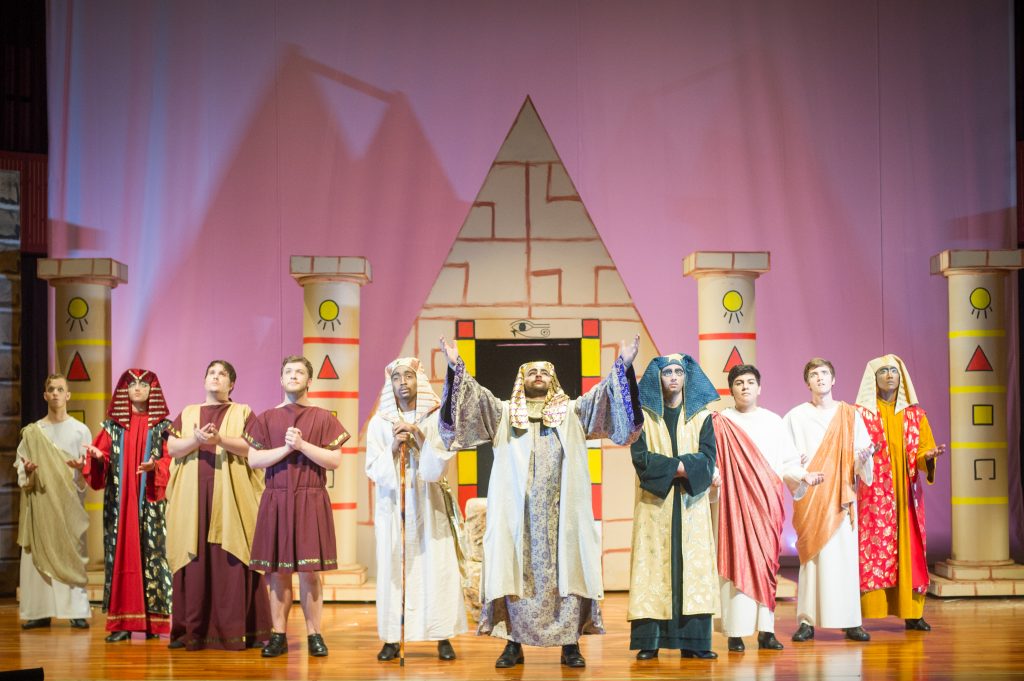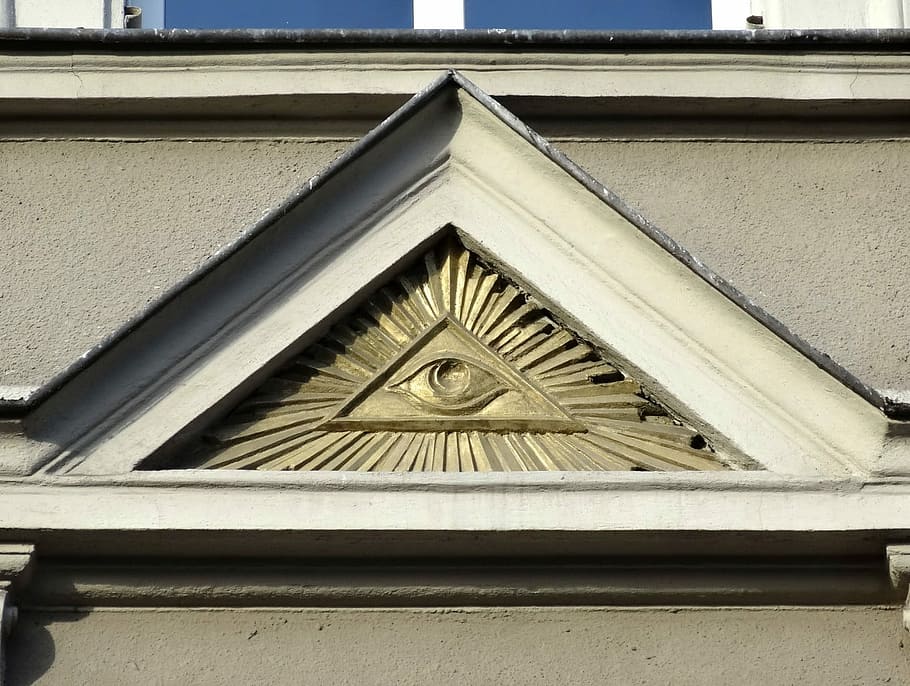
What do Wolfgang Amadeus Mozart, his 1791 opera The Magic Flute and Freemasonry have in common? Ancient Egypt of course!
From December 1784 until his death in late 1791, the world’s most famous composer was a member of a Viennese lodge of Freemasons. As explored on this subpage, Ancient Egypt influenced Freemasonry in a myriad of ways. An offshoot of the order known as “Egyptian Freemasons” believe Freemasonry originated in Ancient Egypt itself instead of medieval Europe. As such, they adopted a number of rites and rituals that incorporated the names of Ancient Egyptian deities in an effort to show they were the true inheritors of Egypt’s millennia-old mysteries.
The Magic Flute serves as a prominent example of Egypt’s impact on Freemasonry. Under the influence of fellow Viennese Freemason Emanuel Schikaneder, Mozart decided to change The Magic Flute from a work that “was originally nothing more than a spectacular comedy […] with music,” to an opera set in ancient Egypt that would glorify the ideals of Freemasonry[1]. Mozart, according to early twentieth-century music scholar Edgar Istel, clearly bought into “the legend […] that Freemasonry originated in Egypt,” noting that The Magic Flute’s plot directly mirrors that of a 1731 French novel in which a Trojan War-era prince “wishes to be inducted into the Egyptian mysteries”[2].
Mozart’s opera follows a prince named Tamino as he attempts to navigate his way “through night and gloom” to rescue his beloved Pamina from the priest Sarastro, who adheres to the mysteries of Isis, the famous Egyptian deity[3]. Tamino and Pamina ultimately undergo a series of trials to join Sarastro’s temple, heavily resembling a Masonic organization, in order to gain its knowledge and prove their worth. Sarastro’s priests, accompanying the initiates, champion wisdom, beauty, and strength, “the three ‘pillars’ of Freemasonry,” and repeat a chant to “Isis and Osiris” throughout the story.[4]
Tamino eventually gets initiated into the temple, as does Pamina who “is found worthy to be accepted into the Order as a sister, contrary to the precepts of [mainstream] Freemasonry”[5]. While unusual for mainstream Freemasons, Pamina’s acceptance into the order would be more than okay with Egyptian Masons of today.
What is Egyptian Freemasonry?
On the most basic level, what differentiates Egyptian Freemasonry from other Masonic groups is its adherence to the Rite of Memphis-Misraïm. A Masonic rite is a sequence of degrees, or ranks, that are attainable by a specific body of Freemasons. Medieval stonemason guilds used degrees, each with its own series of “secret words and handshakes,” to help its members recognize one another as belonging to the same guild.[6] As Freemasonry grew from these practical stonemason guilds into secret societies, it created new series of degrees to bestow upon its members.[7] Secrets possessed by each degree were “withheld not only from outsiders but also from the lower ‘degrees’ of the fraternity themselves.”[8]
Whereas most Masonic rites confer three degrees followed by select “High Degrees,” the Rite of Memphis-Misraïm “has generated the largest number of degrees of all Masonic systems,” 99 in total, dwarfing all other rites.[9] While standard Masonic degrees have titles like “Apprentice,” Companion,” and “Master Mason,” as Memphis-Misraïm’s degrees advance towards 99 they grow increasingly exotic in name. A glimpse at the Rite of Memphis degrees reveals quasi-Egyptian sounding names like “Interpreter of Hieroglyphic,” “Sublime Elect of the Sanctuary of Heliopolis,” and “Sublime Sage of Kneph.”[10] But like many aspects of Egyptian Freemasonry, these degrees seem to only be aesthetically Egyptian, possessing no real relationship to the ancient civilization other than sharing names. Rather than recreating a three-thousand-year-old Egyptian ritual, secrets attained in a new degree “apply merely to signs and symbols, not to the intrinsic nature of the matter.”[11]
Women in Egyptian Freemasonry
Unlike other Masonic branches, Egyptian Freemasonry generally accepts women into its ranks. The Rite of Misraïm, one of the two rites of Egyptian Masonic rites, had admitted “women on equal footing with men” since its founding in the late 1700s.
Even today, Egyptian Masonic chapters stress this mission of inclusion, with the Most Worshipful National Grand Lodge of Ancient Egyptian Freemasons stating on its website that “From its inception, Ancient Egyptian Freemasonry has been open to any human being without any discrimination: every man and woman is welcome, regardless of color, belief, or sexual orientation.” Likewise, the Masonic organization Memphis-Misraim Freemasonry is open to any “Male or Female over 18 years of age.”
As a result of these unusual policies, many mainstream Masonic organizations refuse to recognize Egyptian Freemasonry as a legitimate Masonic body to this day. Even so, Egyptian Freemasonry has made itself known in the public eye through its promotion of various Egyptian symbols and themes in pop culture — like The Magic Flute!
Freemasonry’s Egyptian Symbols

Ever wonder what that weird pyramid on the back of the U.S. dollar bill is? You have Ancient Egypt to thank for that. And (maybe) the Freemasons.
Perhaps the most recognizable ancient Egyptian symbol adopted by Freemasons is the Eye of Horus, more commonly known as the Eye of Providence, shown above. The Eye is still the subject of frequent discussion on Masonic websites and blogs exploring mysticism and the occult. According to Freemason news site masonrytoday.com, the Eye of Horus “was a symbol or royal power, protection and good health” in ancient Egypt.
Beginning in the 1790s, Freemasons began using the symbol to “represent that the actions of a Freemason never go unseen” by the Grand Architect of the Universe. Due to the appearance of the Eye on the Great Seal of the United States, numerous conspiracy theories exist pointing to the symbol as proofs of Freemasons’ involvement in the War of Independence, despite the fact organization’s first recorded use of the eye occurred well after the creation of the seal. Historian Steven C. Bullock explains that by using the Eye of Providence, Freemasons “were reminding themselves to keep to their own strict moral standards, not push their values on the general public.”
Bullock further discounts conspiracy theories that “say the eye on the seal of the United States and the dollar bill means the government is watching over us” by arguing that “its real meaning goes back to a higher power.” Even so, theories persist painting the Eye as a secret symbol of Masonic influence, even appearing in movies like National Treasure (2004).
Citations
[1] Theodore Baker and Edgar Istel, “Mozart’s ‘Magic Flute’ and Freemasonry,” The Musical Quarterly 13 (1927): 512.
[2] Baker and Istel, 513-514.
[3] Baker and Istel, 522.
[4] Baker and Istel, 520-524.
[5] Baker and Istel, 522.
[6] Margaret C. Jacob, The Origins of Freemasonry: Facts and Fictions (Philadelphia: University of Pennsylvania Press, 2006), 11.
[7] Jacob, 12.
[8] Theodore Baker and Edgar Istel, “Mozart’s ‘Magic Flut’ and Freemasonry,” The Musical Quarterly 13 (1927): 510.
[9] “About Us: Ancient Egyptian Freemasonry,” The Most Worshipful National Grand Lodge of Ancient Egyptian Freemasons, accessed March 17, 2020, https://administratorgener.wixsite.com/egyptian-freemasonry/about-us.
[10] “Degrees of the Rite of Memphis,” Memphis-Misraim Freemasonry, accessed April 7, 2020, https://emoaprmm.com/rite-of-memphis/.
[11] Baker and Istel, 510.